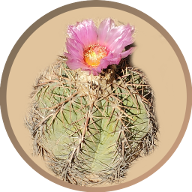- Elephant Tree (Bursera microphylla)
- Crucifixion Thorn (Canotia holacantha)
- Emory’s Crucifixion Thorn (Castela emoryi)
- Ironwood Tree (Olneya tesota)
- Desert Smoke Tree (Psorothamnus spinosus)
- Catclaw Acacia (Senegalia_greggii)
- Graythorn (Ziziphus obtusifolia)
Elephant Tree (Bursera microphylla)
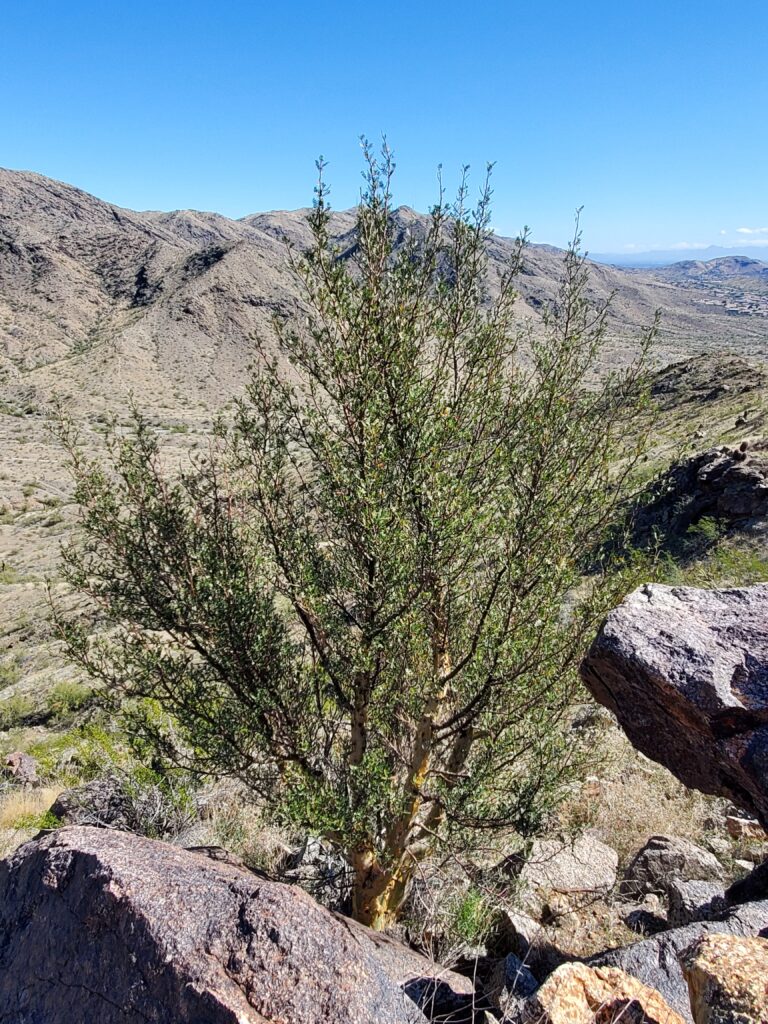
The elephant tree is a rare find in Arizona because it is not frost tolerant (30F minimum). This picture is from the south end of South Mountain Park, where there is a stand of many elephant trees. Although this is a small tree, the trunk and branches will swell to be thick like an elephant trunk. This is thought to help the tree conserve water. It is fairly easy to grow this tree in the greater Phoenix area, where the heat-island effect prevents frost.
Crucifixion Thorn (Canotia holacantha)
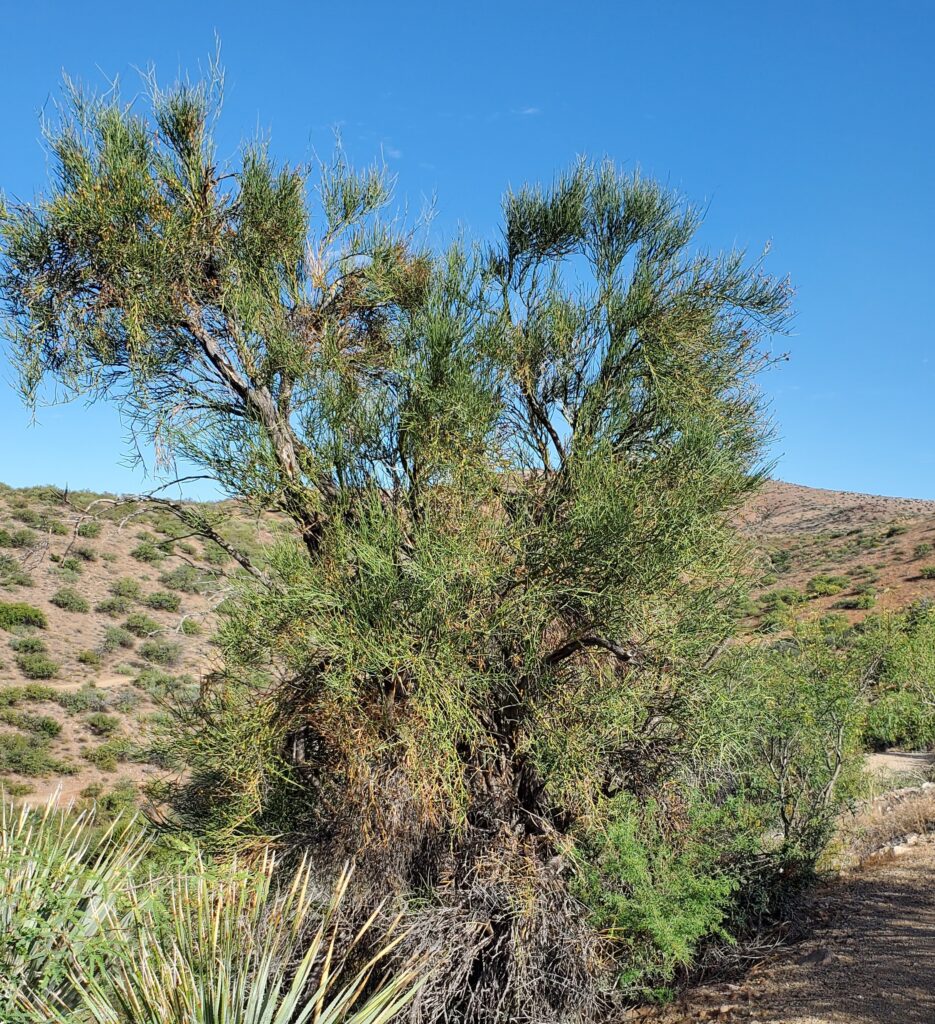
There are three plants in Arizona called “Crucifixion Thorn” that are unrelated to each other (early European settlers clearly had religion on the mind). This tree is found almost exclusively in high deserts of central Arizona. This picture was taken on Round Mountain in Globe. It is mostly leafless, with masses of green twigs performing the photosynthesis. It reminds me of a Mormon’s tea bush, except that it grows into a tree with age. You can usually spot the red/brown seed clusters that remain on the tree for a long time.
Emory’s Crucifixion Thorn (Castela emoryi)
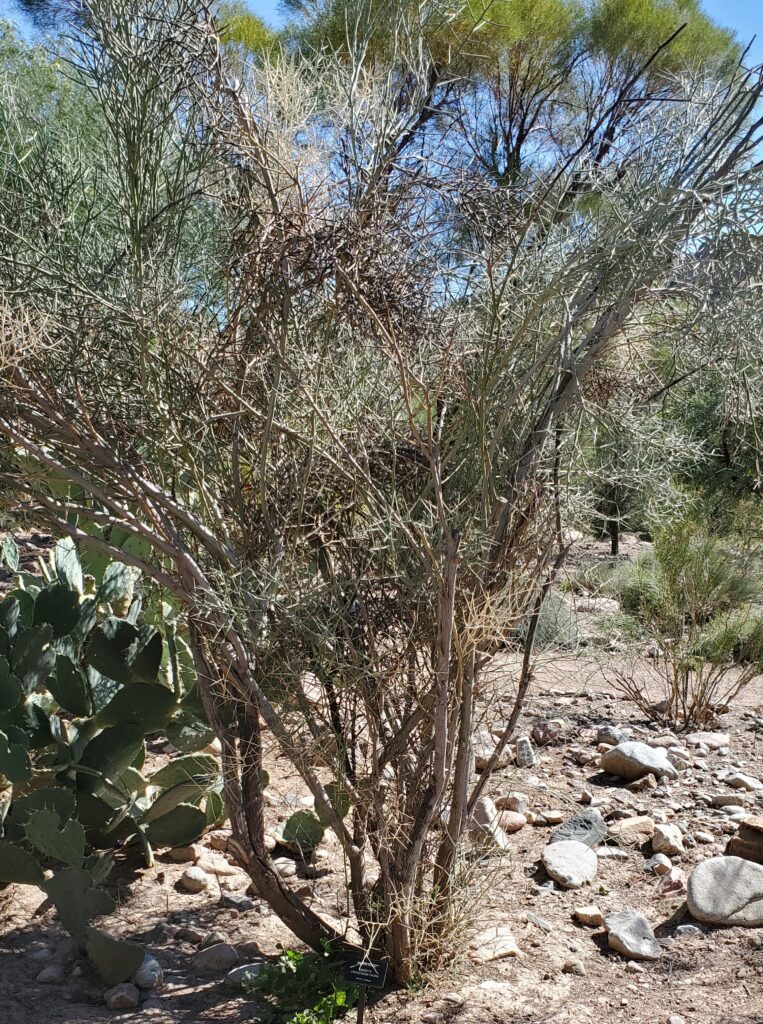
A mass of grey-green thorns forming a multi-trunked tree. I have yet to spot this growing in the wild. This picture is from the Boyce Thompson Arboretum in central Arizona.
Ironwood Tree (Olneya tesota)
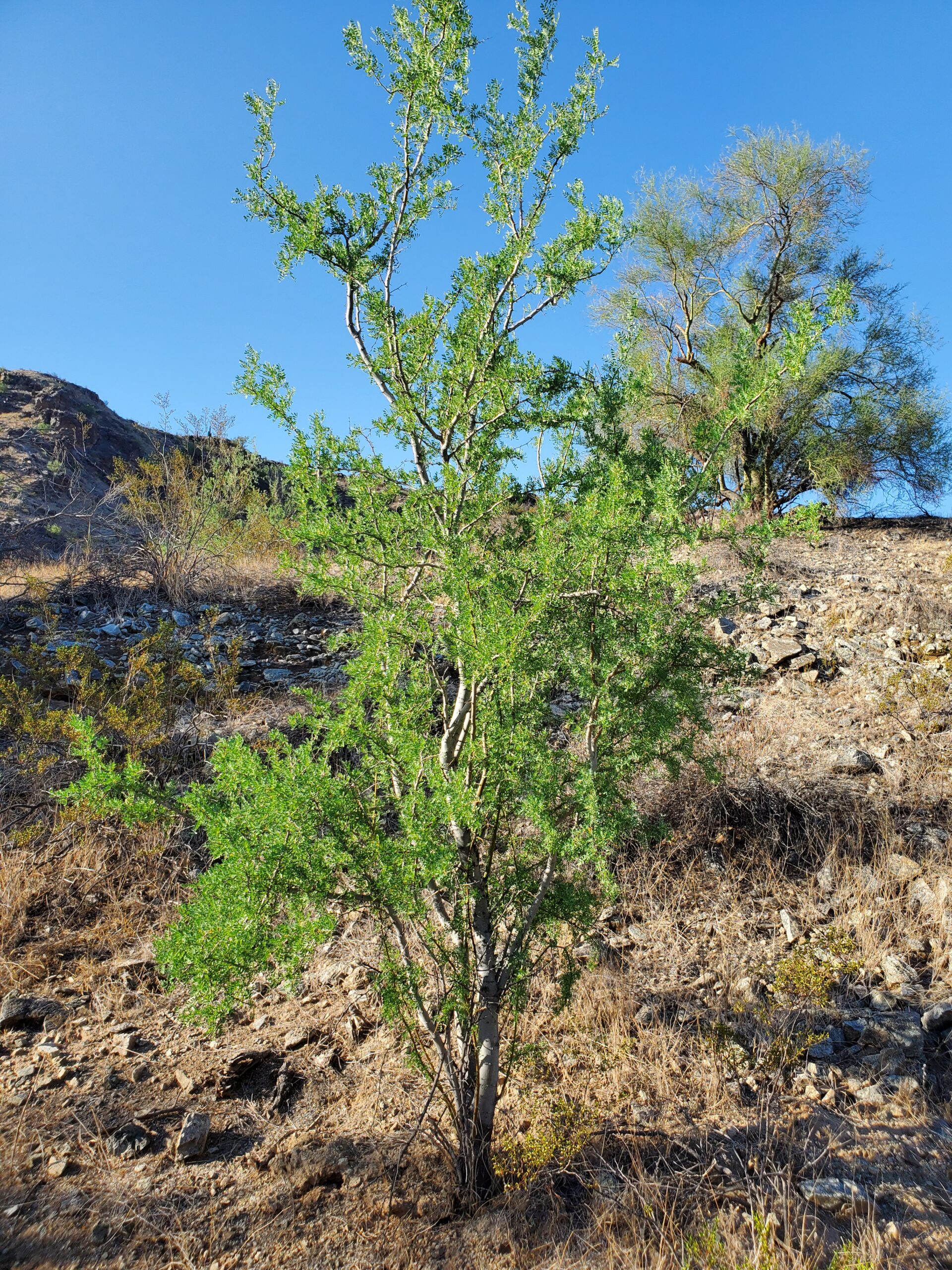
The ironwood is a unique low-desert tree that is the only member of the genus Olneya. It holds its leaves all year, except for during extreme drought or just before flowering. Small pink flowers cover the entire tree in May, creating a sight to behold. The tree is full of thorns and likes to grow low to the ground, making pruning a dangerous task.
Desert Smoke Tree (Psorothamnus spinosus)
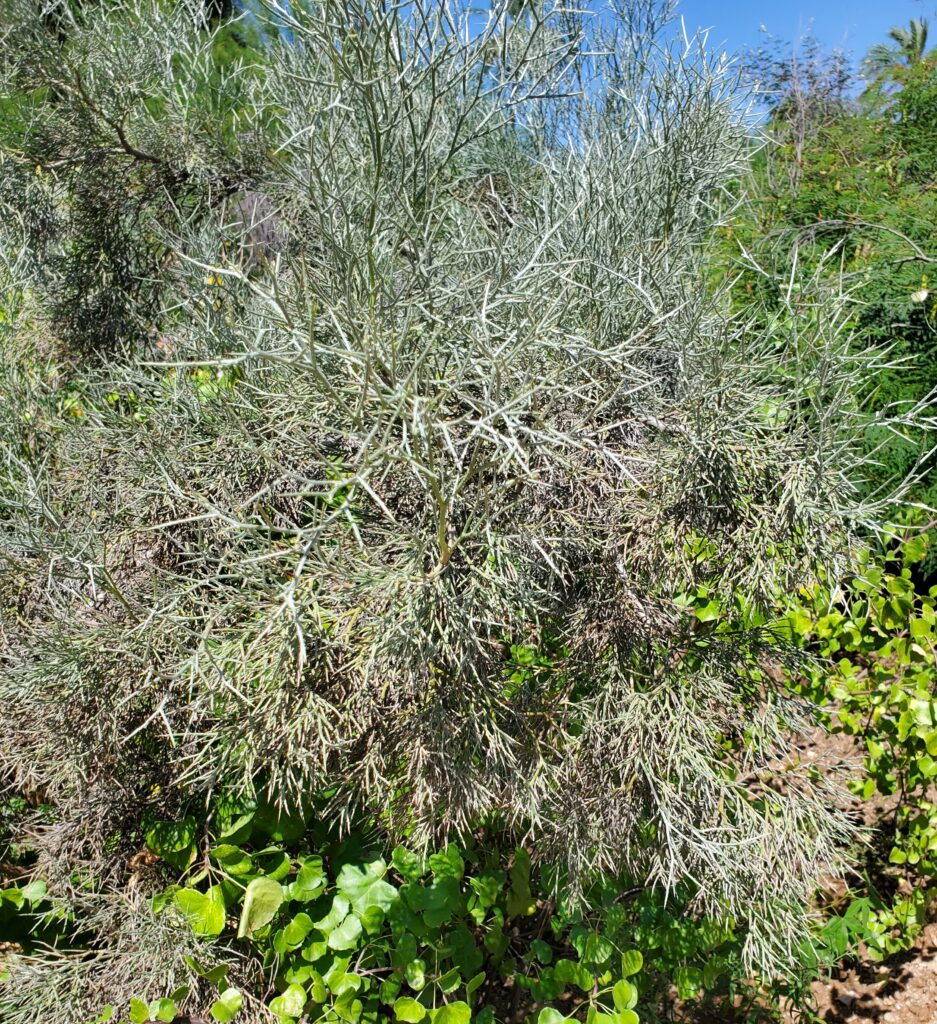
This is a picture of a desert smoke tree at the Tohono Chul garden in Tucson. Normally, this tree grows in very dry desert areas of western Arizona and eastern California. It can be found at nurseries but it is not common. I planted a small 1-foot tall desert smoke tree in my front yard in Tempe and it loves growing there. This unique and beautiful plant is one of my favorites.
Catclaw Acacia (Senegalia_greggii)
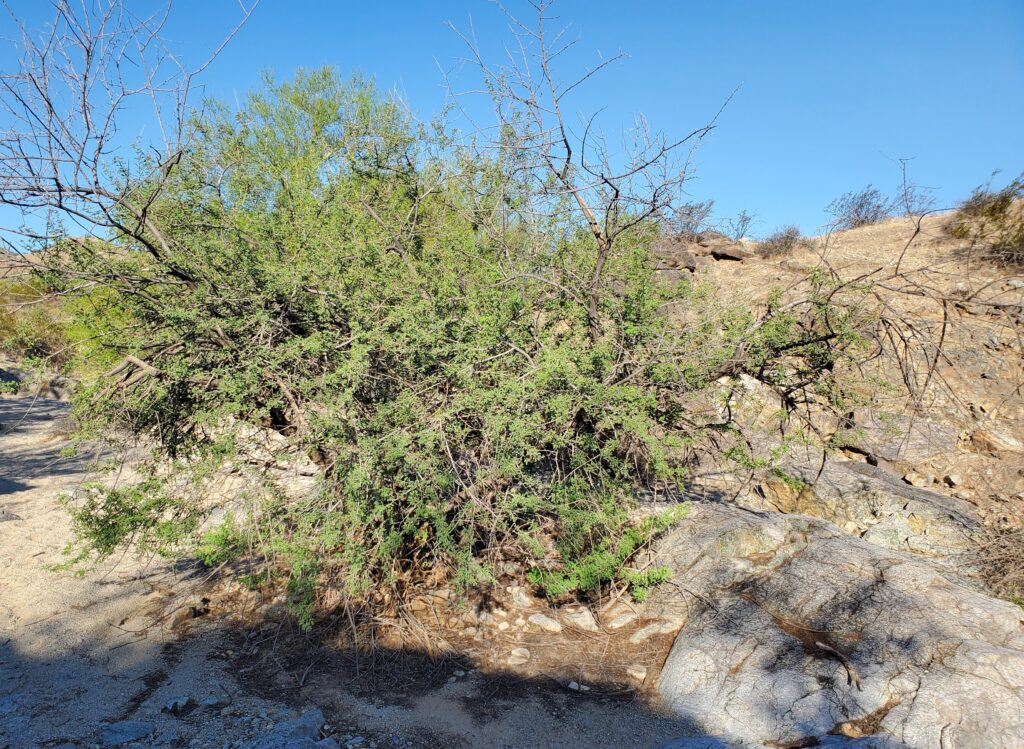
This catclaw acacia grows in the low desert in a wash on South Mountain. Like most acacia trees it has extremely tiny leaves. The seed pods are easy to identify because they are dark brown, large, and flattened, producing disc-like seeds. This tree always tends to grow low to the ground like a large bush.
Graythorn (Ziziphus obtusifolia)
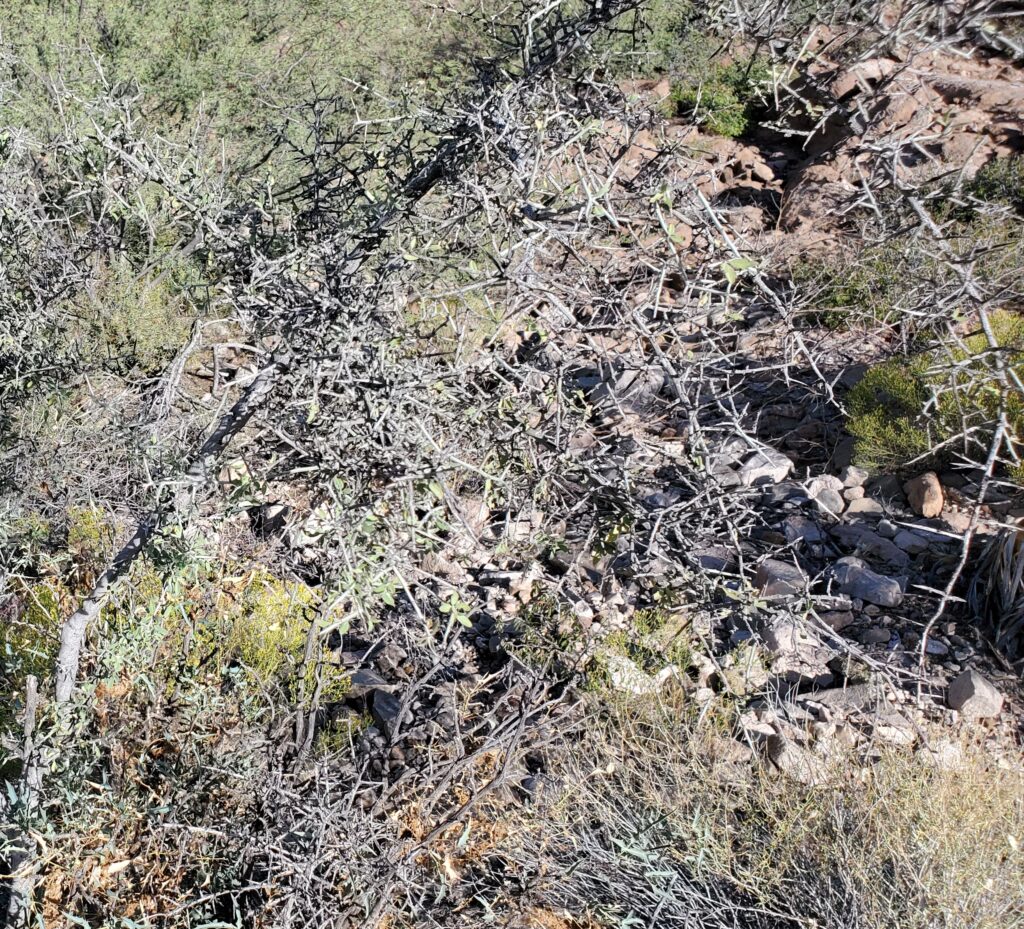
I find Graythorn to be difficult to identify in the wild. It is a bushy mass of spiky twigs with leaves that drop for drought or frost. It’s most distinguishing feature is the small black berries that it produces.
